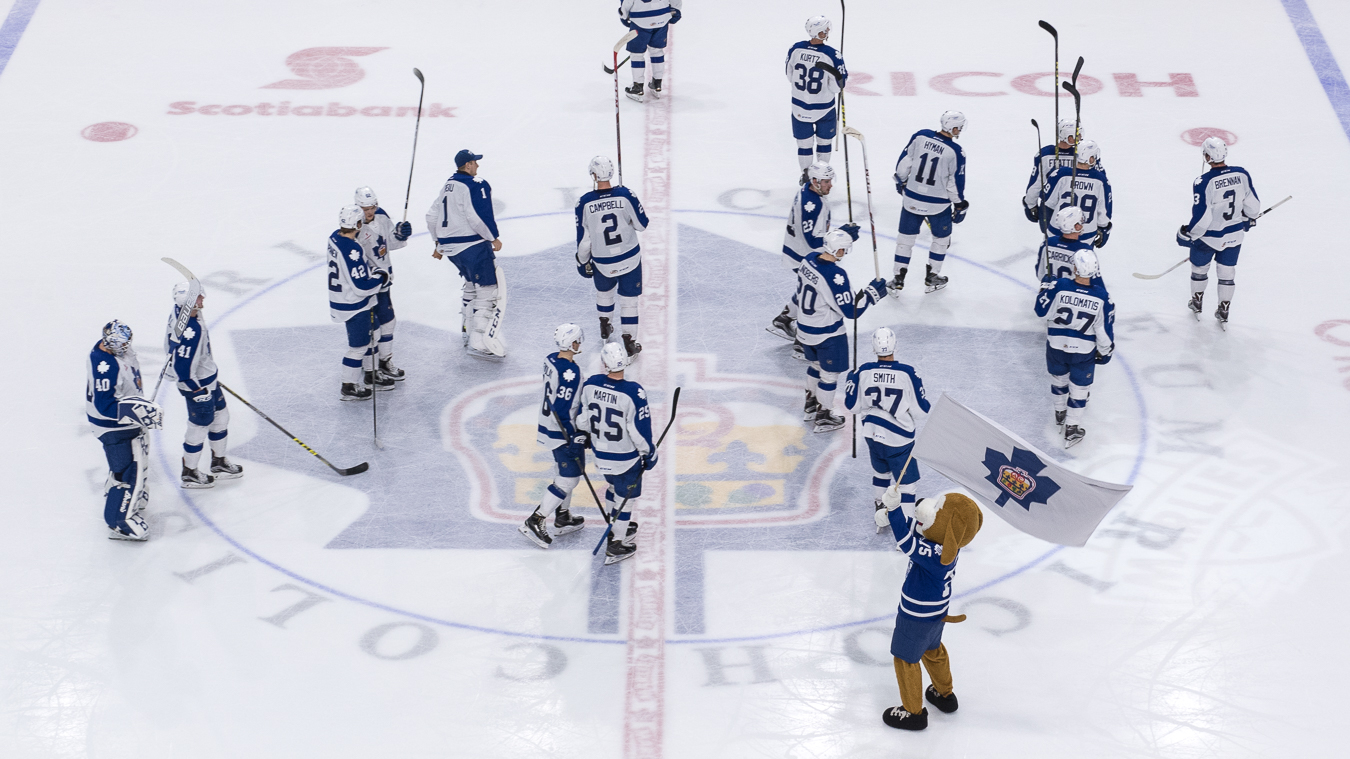The Calder Cup was awarded to a deserving Lake Erie team last weekend, bringing the 2015-16 American Hockey League season to an end.
The dust has now settled on a memorable Toronto Marlies season. Following up on the year-end season review, it’s time to reflect on individual performances.
The criteria for grading: Players to have finished the season with the Toronto Marlies while appearing in at least 20 regular season games.
A+
William Nylander
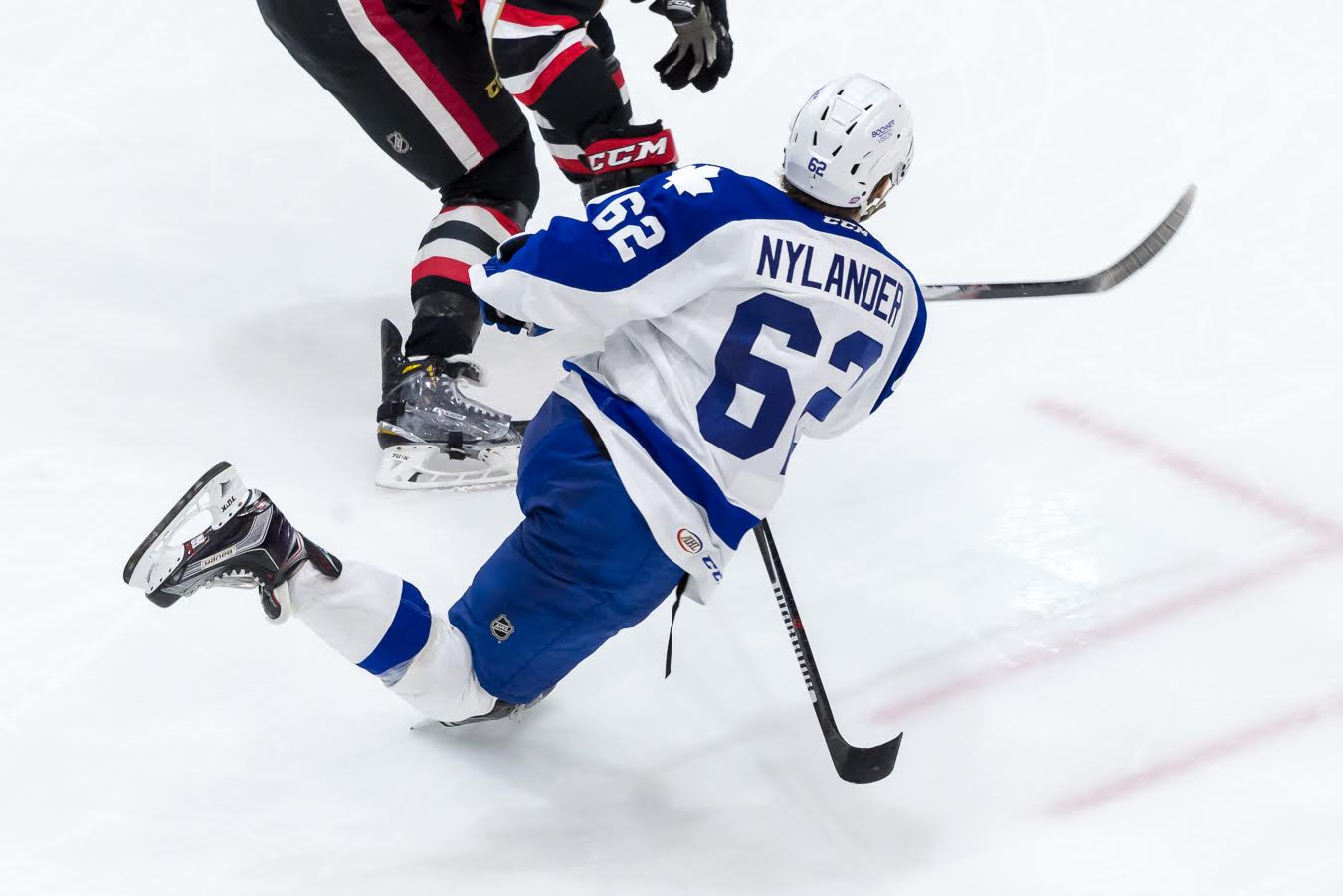
He was the first player I mentioned in my midseason grading and it seems fitting to carry on in that vein. If not injured at the World Juniors, Nylander would no doubt have been close to setting all kinds of franchise and AHL records before being called up to the Leafs at trade deadline.
The only disappointment was his play during the postseason, but you can factor in illness, injury and the inexperience of youth. The hat trick in the penultimate game of the season gave us a glimpse of what the Toronto Marlies missed from him during most of the playoff campaign.
Nikita Soshnikov
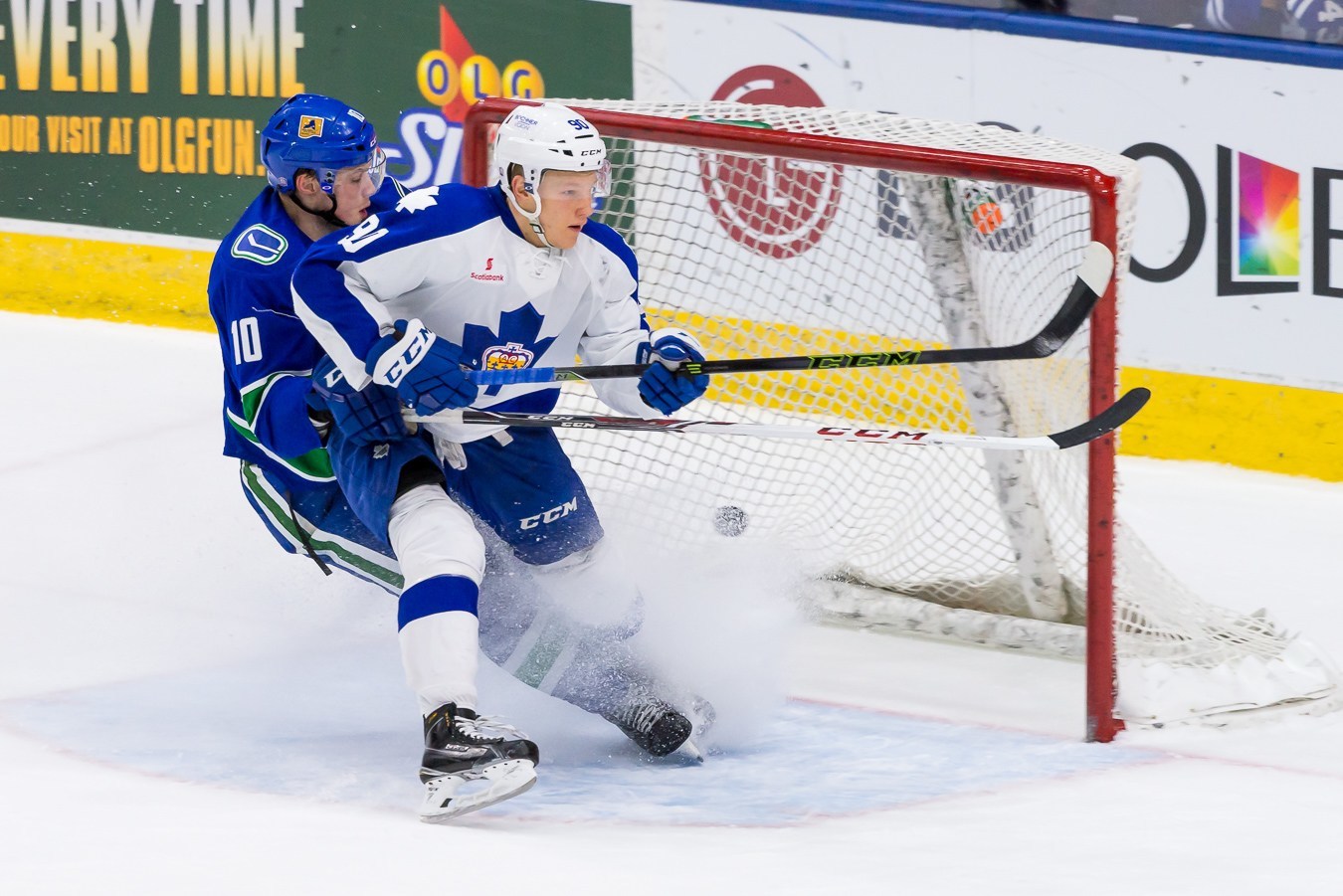
Everyone’s favourite Russian suffered injuries in the second half of the season that curtailed his chances to suit up and play up to his best when able to take the ice.
Often linemates alongside Rich Clune and Frederik Gauthier, Soshnikov still produced 28 points through 52 games, 20 of which were accrued at even strength. His contribution with the Leafs garnered praise from all and it was a blow to the Toronto Marlies that Soshnikov was unable to contribute much during the playoffs due to persistent ailments.
Josh Leivo
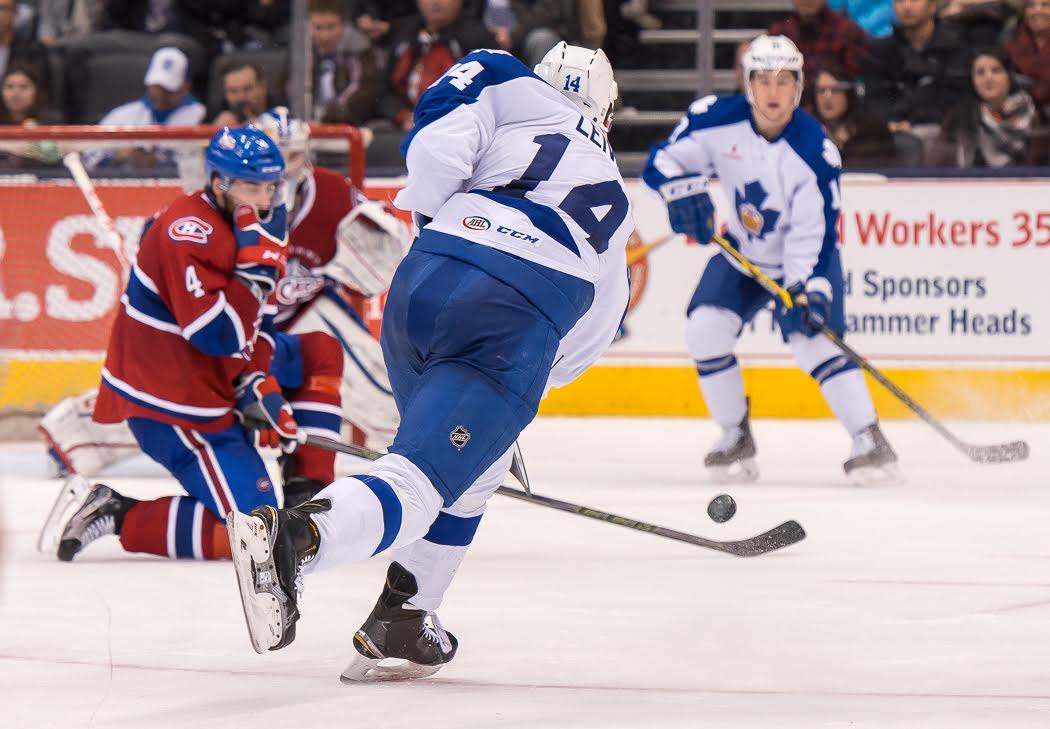
Leivo elevated his game and showed considerable improvement after a sluggish start to the season. The winger produced a fraction under point per game pace through 51 regular season games.
Perhaps most impressively, he was dominant at even strength, recording a team-leading 18 primary assists. Leivo was the leading forward points producer during the playoffs and his line (primarily with Arcobello and Brown) often proved the Toronto Marlies‘ best offensive threat.
Zach Hyman
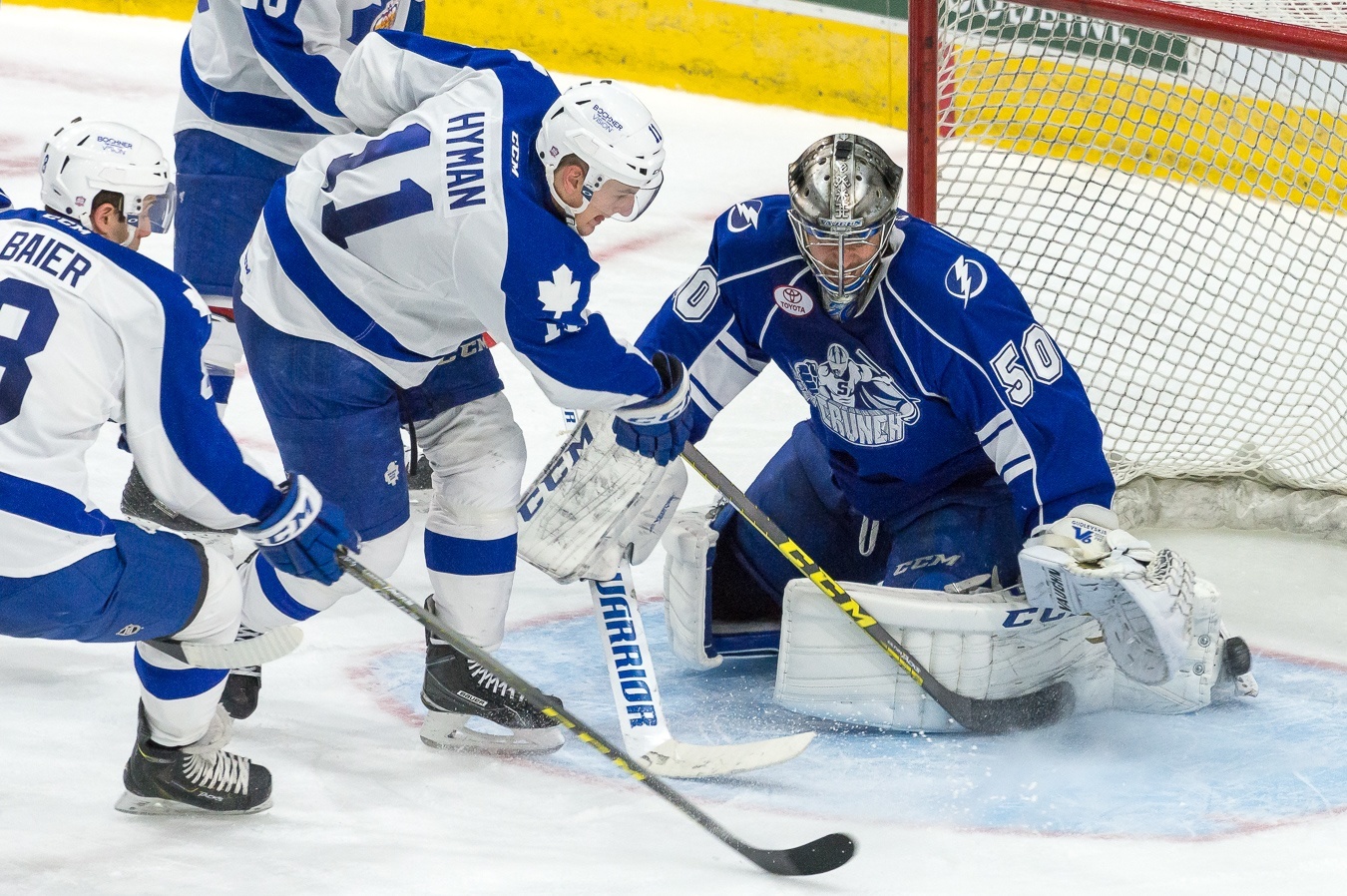
It’s all credit to Hyman that many forgot he was a rookie this past year. It was a season of consistent improvement throughout the season for Hyman, who was more than happy with the “engine room” role he was deployed in next to Nylander. Forecheck, fetch, pass and crash the net were the order of the day, and Mike Babcock certainly enjoyed his style of play when with the Leafs. He was the leading rookie scorer on the Marlies and also led the team in shorthanded goals (four). The penalty kill showcased Hyman as a responsible and effective player who I doubt the Marlies will see much of next season.
Connor Brown
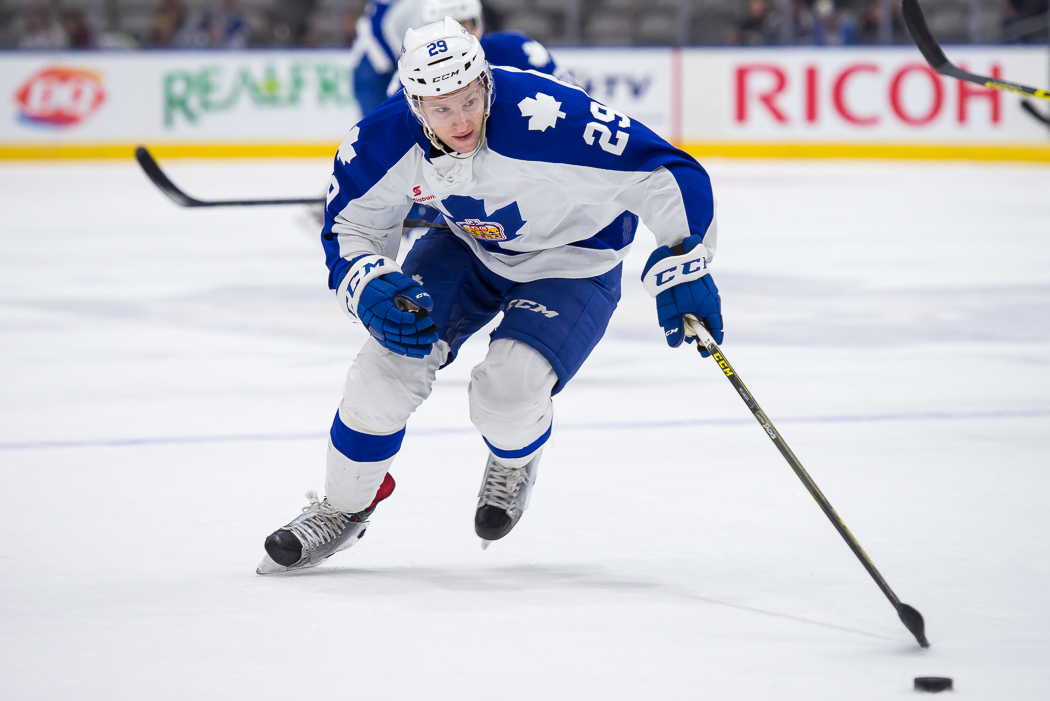
A shortened season for the leading rookie scorer of last season, but Brown made enough progress to merit high praise. October was a tale of frustration for Brown, who did everything but score and produced just four assists through eight games. In the last game of said month, Brown incurred an injury that kept him out of action until the latter part of January. Upon his return, the winger put up eleven goals and 25 points in 26 games. A first go with the Leafs was highly successful as he made an impression with six points in seven outings, including a debut NHL goal against Anaheim.
Seven goals in the postseason for the Toronto Marlies made him joint highest scorer. Along with Kapanen, he was a standout forward.
Connor Carrick
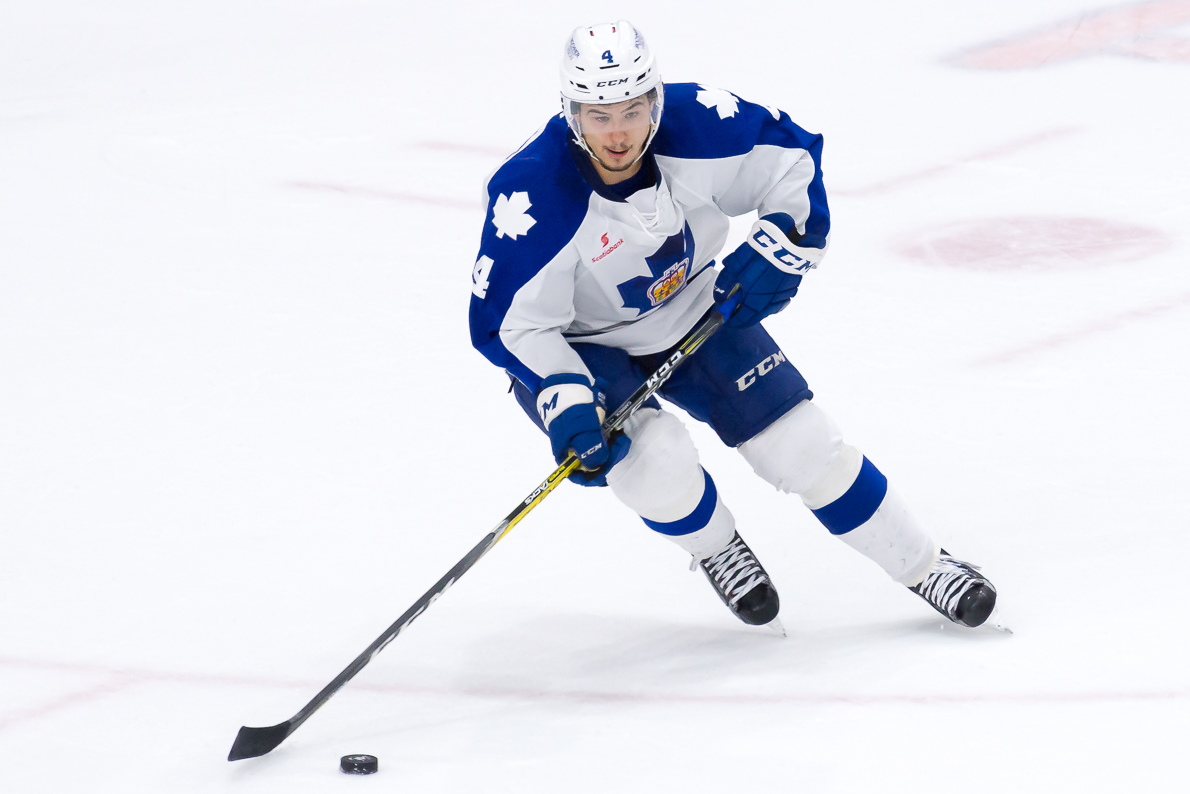
I’m making Carrick the one exception to my rule as he played a combined 20 times after five games at the back end of the regular season. Not much more could have been asked of a defenseman thrown into the deep end after the first trade of his career. Impressing with the Leafs, Carrick was an offensive juggernaut for the Marlies during the playoffs and as a result wound up as the Calder Cup’s leading points producer despite playing fewer games than Hershey and Lake Erie players.
A
Mark Arcobello
Arcobello finished the season with the same amount of goals as T.J Brennan and just nine fewer points despite having played 20 fewer games for Toronto. He was never able to translate that form into the NHL, and sadly for the Marlies he was far from that dominant regular season player during the playoff campaign. His departure as a dominant centreman (at AHL level) will leave a big hole for someone to fill next season.
Brendan Leipsic
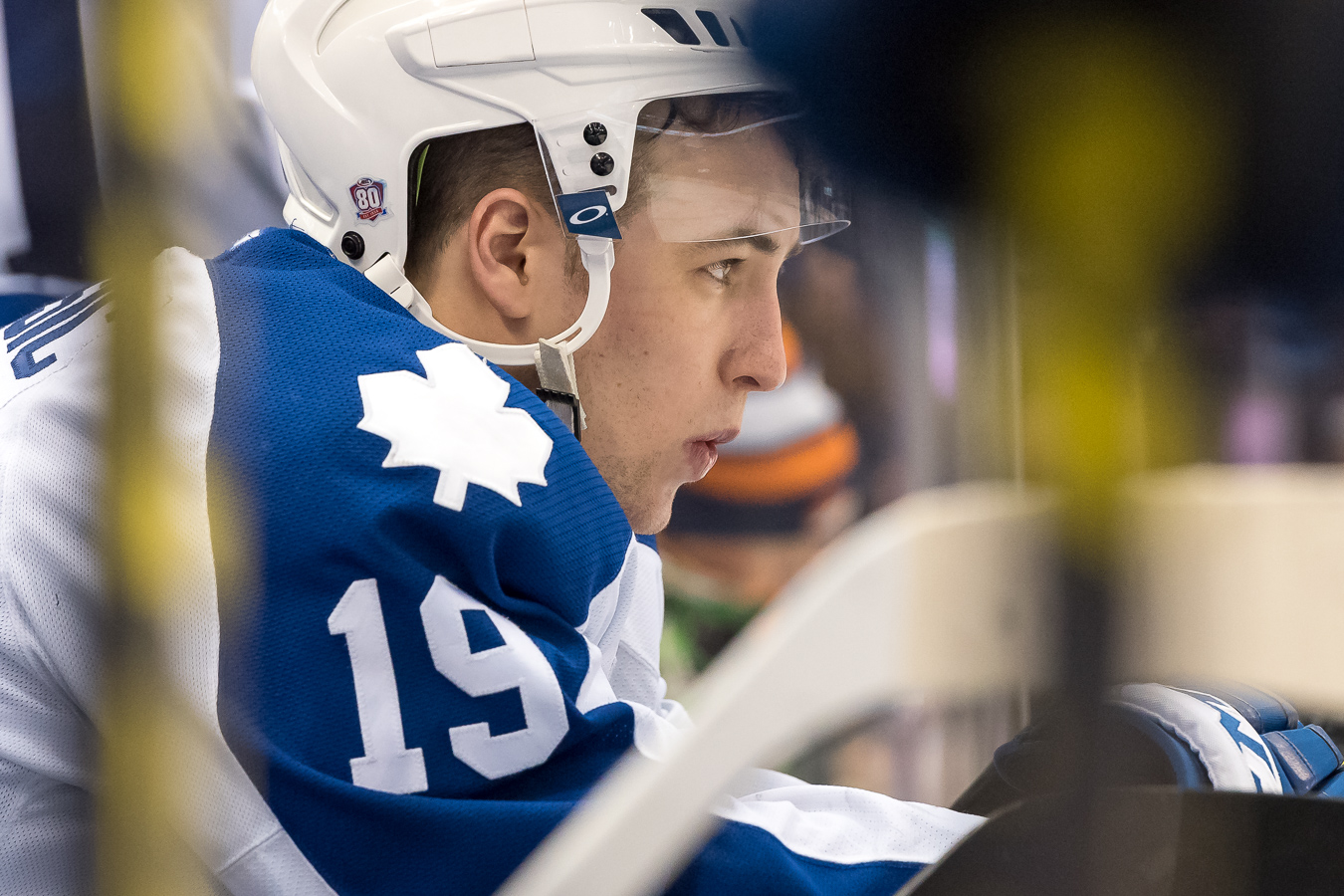
The sophomore forward often didn’t receive just rewards on the score sheet in the first half of the season but was able to change that post-2015. After struggling to produce, Leipsic ended up as the third leading scorer (54 points) on the team and impressed in a short stint up with the Leafs.
It was a surprise, then, when the Manitoba native failed to come up with the goods in the playoffs, limited to just four points, and he was a healthy scratch on two occasions. Despite being one of the biggest disappointments of the Calder Cup campaign, Leipsic was one of the most improved players during the season.
T.J Brennan
Brennan ended the regular season as the Marlies leading goals and points producer – especially at even strength. I’ve marked down the Eddie Shore Award winner because his defensive fragilities regularly reappeared towards the end of the year and were especially apparent during the postseason. His penchant for those mistakes, allied with a lack of foot speed, probably means his NHL dreams are distant, but it’s not unreasonable to think Toronto offers him a substantial AHL deal.
Andrew Campbell
The seventh captain in franchise history led by example. Rinat Valiev flourished under his wing, while older professionals like Rich Clune benefited from Campbell’s leadership.
Arguably the team’s most consistent defenseman throughout the season, he often laid his body on the line for his teammates with incredible bravery in front of shooters. It was a career year offensively for Campbell, and Toronto certainly missed him during the playoff run. The Captain made an early return in order to make an appearance in the crucial Game 7 against Albany, but still appeared less than 100% versus Hershey in the Conference Final.
Colin Smith
A late addition to the Marlies roster, Smith wasted little time in making an impact. Scoreless in his opening two games, Smith announced himself with a four-point game in a 10-5 win over Rochester, going on to produce 22 points in 23 regular season games for the blue and white.
It’s even more impressive when you consider that, toward the back end of the season, the Marlies were mostly made up of junior and former college players playing their first professional games. A smaller, creative forward with a nose for the net yet not afraid to engage physically, Smith was unfortunate to be a healthy scratch in the postseason. Five points in nine playoff games says he perhaps should have gotten time over others not producing.
A –
Viktor Loov
Loov was another player to have his season affected by injuries. To his credit, Loov’s decision making was far better this year and he was less inclined to take himself out of a play in search of the huge hit. Given far more freedom by Sheldon Keefe to carry the puck, the Swedish defenseman proved himself an effective outlet on the left side and surprised some opponents with deceptive foot speed. It’s frustrating that he doesn’t produce as much offensively as his talents should allow him to — just 15 points, all accrued at even strength.
Rich Clune
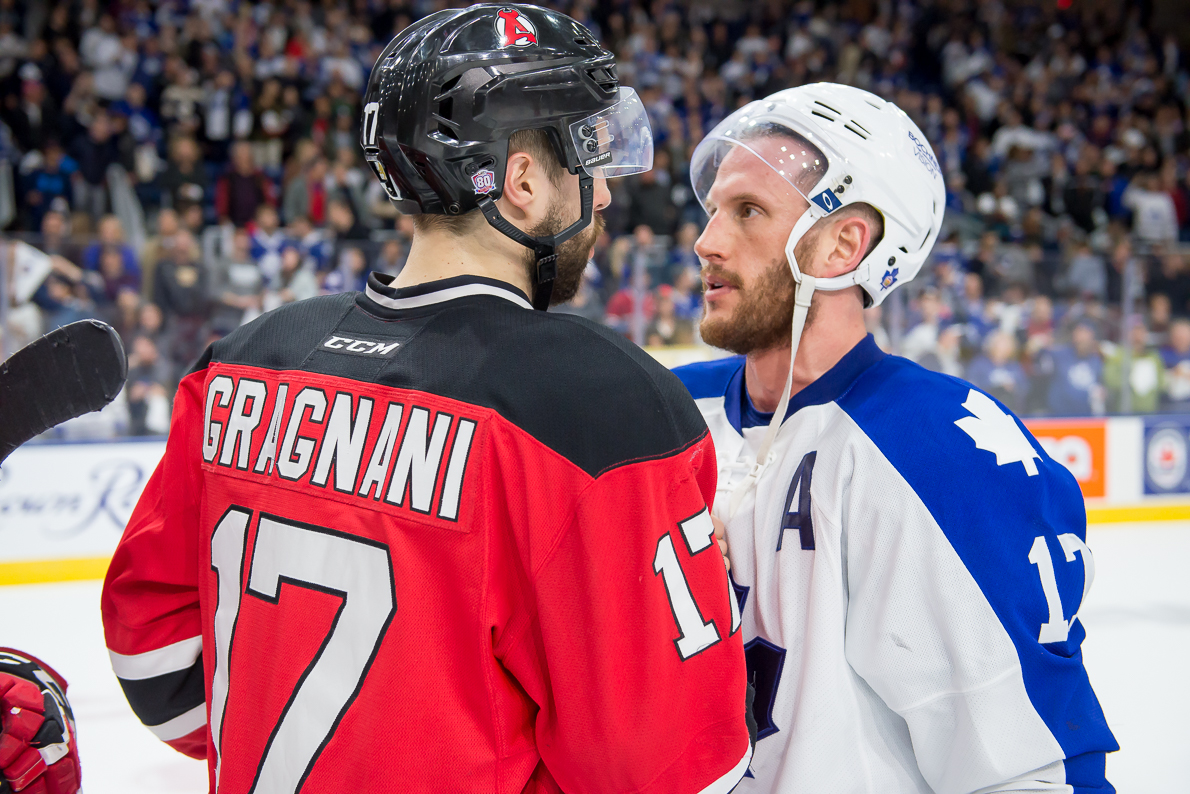
Clune was able to shed his enforcer image and enjoyed his role as part-time protector, part-time teacher on this young Marlies team. Far from a liability, Clune produced a career-high 24 points alongside Gauthier and Soshnikov on a fourth line that often competed with the best in the AHL.
He began the year as Nylander’s shadow and filled in whatever role was assigned to him with a smile on his face. Clune scored the series winner against Albany and his numerous contributions on and off the ice were enough to think he could be offered another deal for next season.
Rinat Valiev
Barely spoken about in the first half of the season, Valiev grew into his rookie season under the stewardship of Andrew Campbell.
Guilty of taking far too many penalties early on, the Russian native was only tagged for five minors in 2016. A quick learner, he’s far stronger and fleeter of foot than might be noticed at first glance. Offensively, he produced just a point less than the far more experienced Campbell and Percy, but he was one of a few to struggle during the playoffs. An encouraging beginning to his pro career, however.
Stuart Percy
Percy continues to be a frustrating prospect on many levels. Sadly, injuries once again curtailed his involvement somewhat and another concussion has to be a worry.
At his best, Percy continues to be a cool, calm and calculated defenseman who is comfortable in possession, particularly when exiting the defensive zone. His progress seems to have stunted as he enters the summer as an RFA, although how much injury has inhibited him is up for debate.
Kasperi Kapanen
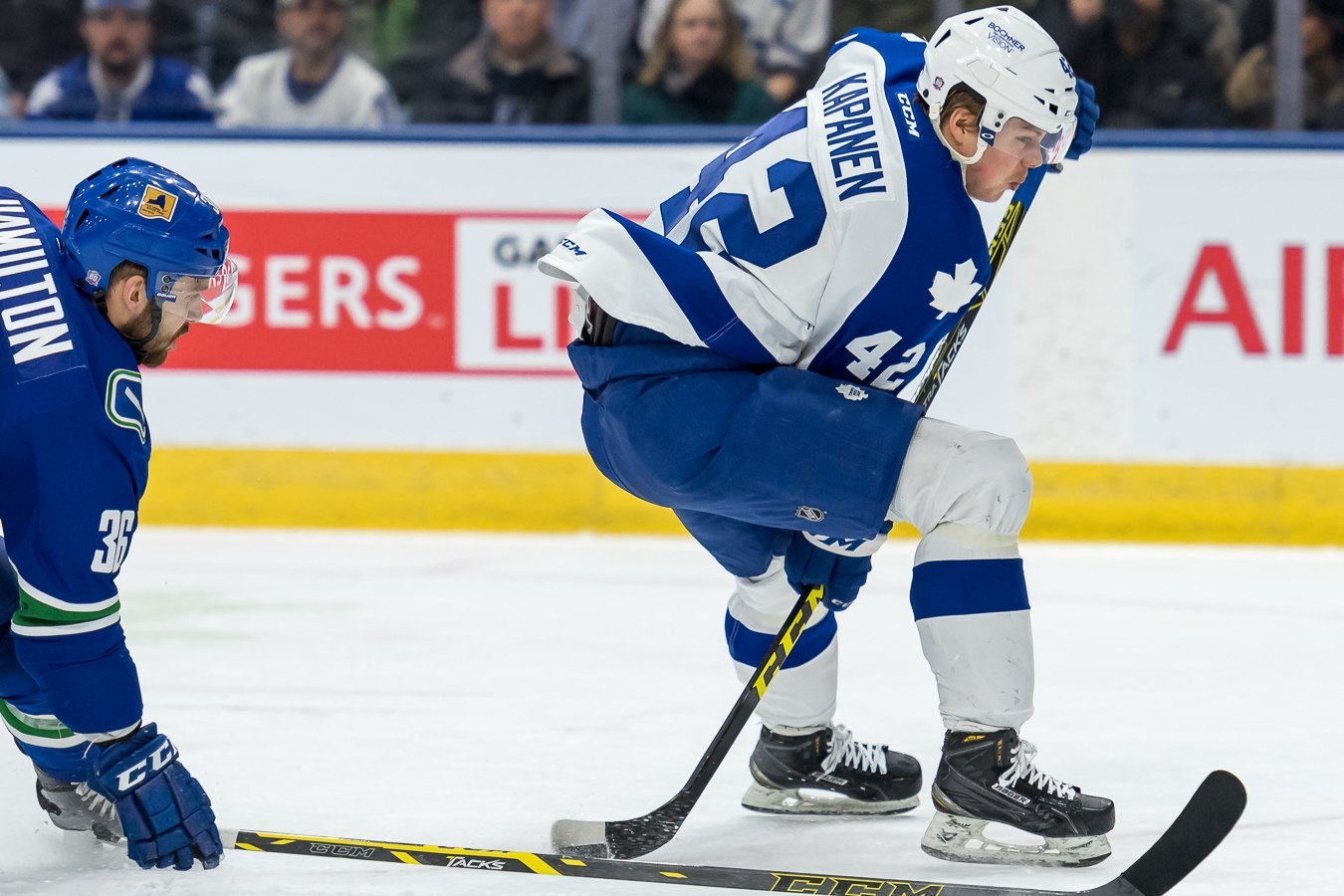
A steep learning curve for Kapanen, who was under the microscope more than other rookies due to being a part of the Kessel trade. The Finnish forward never really got motoring until just before he left for the World Juniors. Returning with a gold medal, Kapanen hit the floor running offensively and received his shot with the Leafs after the trade deadline. His first go around in the NHL was unsuccessful. That form carried over with the Marlies heading into the postseason, leading Keefe to scratch the young winger to send a message. It was heard loud and clear as, when given his opportunity, Kapanen was one of Toronto’s best forwards throughout the remainder of the playoffs.
B +
Frederik Gauthier
I’ve found Gauthier one of the most difficult players to assess this season. It all depends where your expectations lay for the former first round pick. He did well to stick around with the Toronto Marlies when many thought he’d be a lock for time in the ECHL. He was everything you expected him to be — defensively responsible, great on faceoffs, and a very good penalty killer. Despite working on the offensive side of the game, Gauthier managed just 18 points on the season and found himself a healthy scratch in the playoffs. He’s a rookie with much room for improvement, and in that regard he’s afforded a little breathing room.
Justin Holl
Holl was a clever, no-risk acquisition made by Kyle Dubas last summer. The former Chicago Blackhawks draft pick was the only player to make it out of the Marlies camp held in Newfoundland. Through 60 games, Holl was a reliable enough bottom pairing guy and exceeded initial expectations. Now a free agent, it would be no surprise to see Toronto sign him to another AHL deal as a depth player who could bounce between the Toronto Marlies and Solar Bears if necessary.
Sam Carrick
Carrick would have liked his chances of making the Leafs opening roster but failed to make the cut. Formerly a hard-working, reliable and keep-it-simple type of player, the former Brampton man adapted his game to the new style of play. There were early struggles offensively for the multi-role Carrick, who managed to turn his fortunes around just before Christmas, averaging a goal every other game from Boxing Day onwards. He played with the same tenacity and all-action style during the postseason but just couldn’t produce, leading to a healthy scratch in the Hershey series. Now an RFA, Carrick may prove a victim of the numbers game in Toronto.
Tobias Lindberg
Acquired in the Dion Phaneuf trade, Lindberg found his early days with the Toronto Marlies tough going. A transition from the rough and tumble Binghamton Senators to the Toronto way of playing took time, but Lindberg showed us some glimpses of being a promising rookie.
He produced at a slightly lower rate than with the Senators, but there were extenuating circumstances for that. A victim of the numbers game and residing lower down the prospect chain in Toronto, Lindberg’s opportunities were not as plentiful as he may have wanted. He suited up in just three playoff games.
His sophomore season should present him with better circumstances to succeed and Toronto should expect to see a little more after a promising stint with the Leafs.
B
David Kolomatis
Kolomatis was signed as defensive cover when the Toronto Marlies’ blue line corps was a little thin on the ground. He provided a right-sided option and proved reliable when called upon, although he was unable to replicate previous offensive production in the AHL despite scoring on debut.
Used as a depth player, especially down the stretch when the team changed on a game to game basis, Kolomatis wouldn’t figure during the playoffs despite injuries on defense. It looks as if he won’t be resigned this summer.
Garret Sparks
It was a season of highs and lows for Sparks, who has flattered to deceive for the most part in the last year of his ELC. Either excellent or a liability (with Leafs or Marlies), this was no better encapsulated than in the postseason when he began with a shutout in a reliable half game in relief. His next three outings were poor to say the least, and there’s a question mark hanging over his future in Toronto as an RFA.
Antoine Bibeau
Like Sparks, Bibeau also had a season of varied fortunes. Perhaps a little more excusable for a goaltender in his sophomore season, at least Bibeau showed some consistency down the stretch and put together a good run of form heading into the playoffs. In truth, the Quebec native wasn’t much better than Sparks during the postseason but he certainly wasn’t the only reason why Toronto failed to get by Hershey. Bibeau does have another year remaining on his entry-level deal and should get a chance to build on the end to his season, playoffs notwithstanding.






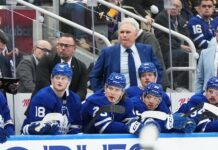
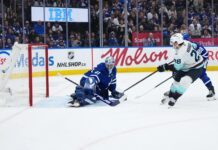
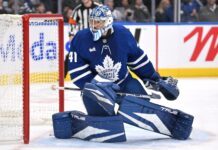
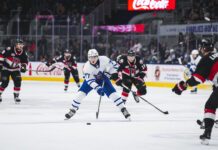
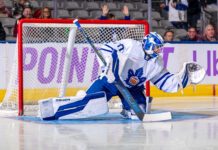
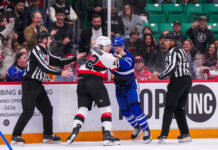
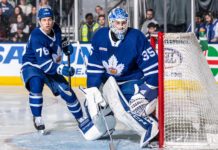

![John Gruden after the Leafs prospects’ 4-1 win over Montreal: “[Vyacheslav Peksa] looked really comfortable in the net… We wouldn’t have won without him” John Gruden, head coach of the Toronto Marlies](https://mapleleafshotstove.com/wp-content/uploads/2025/09/gruden-post-game-sep-14-218x150.jpg)







